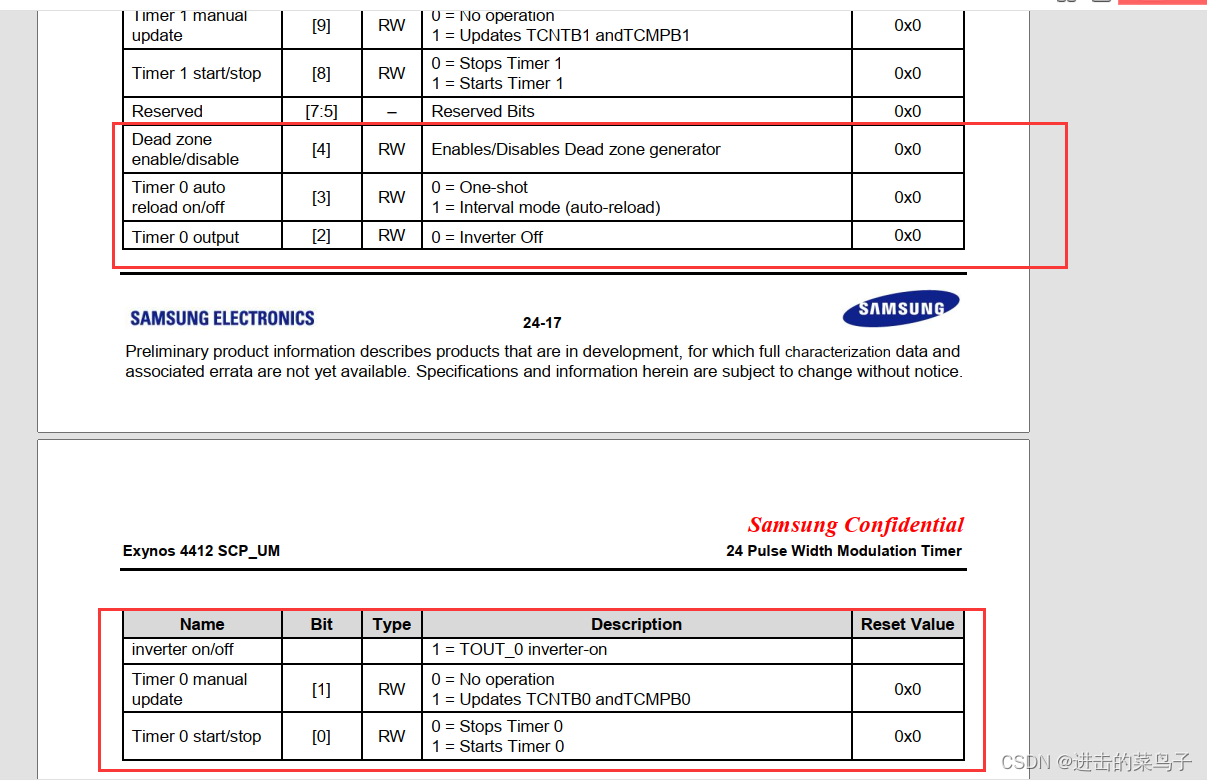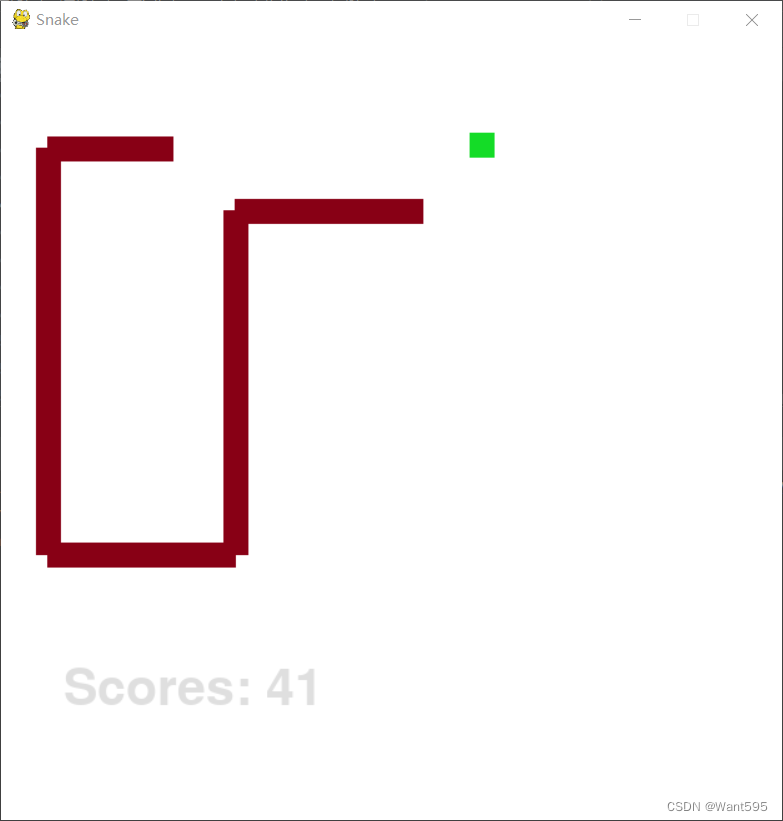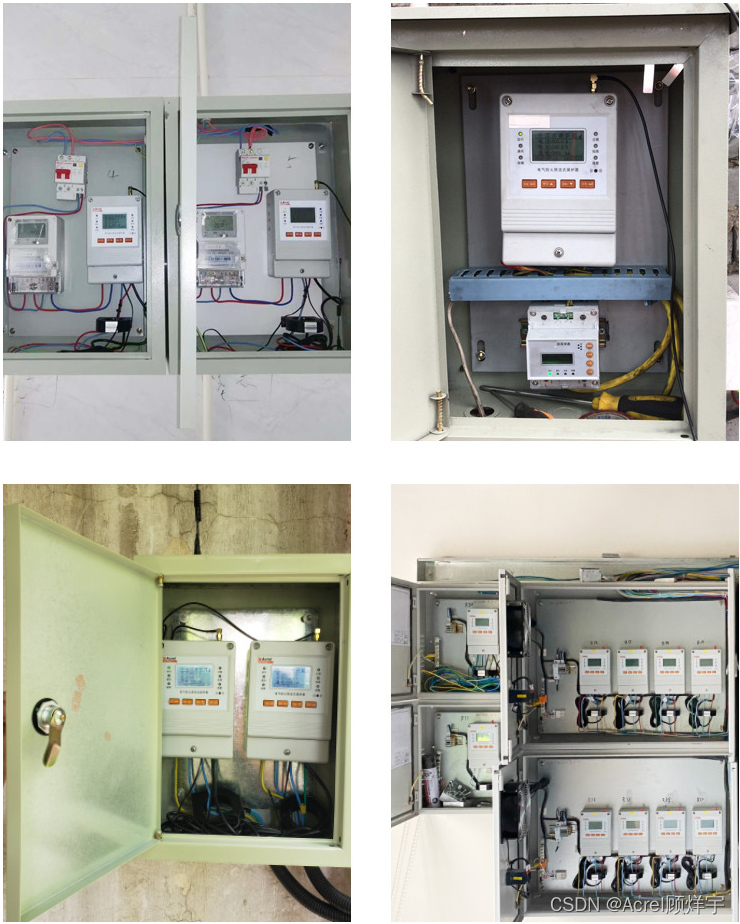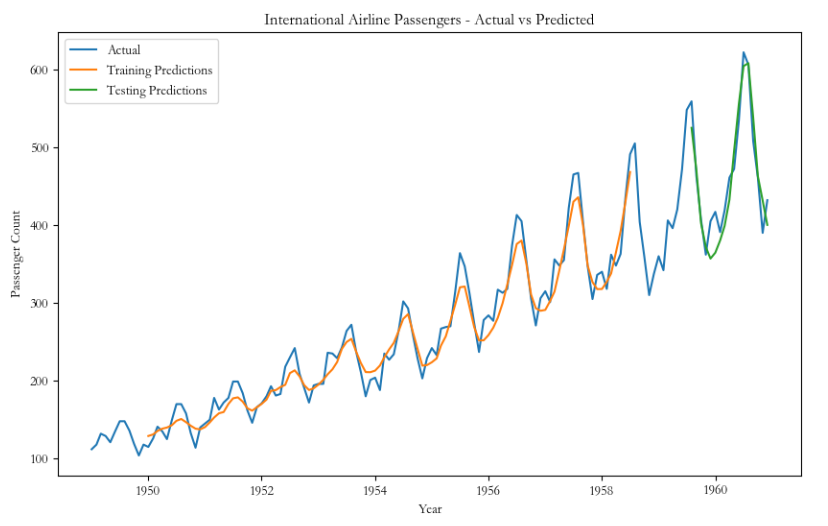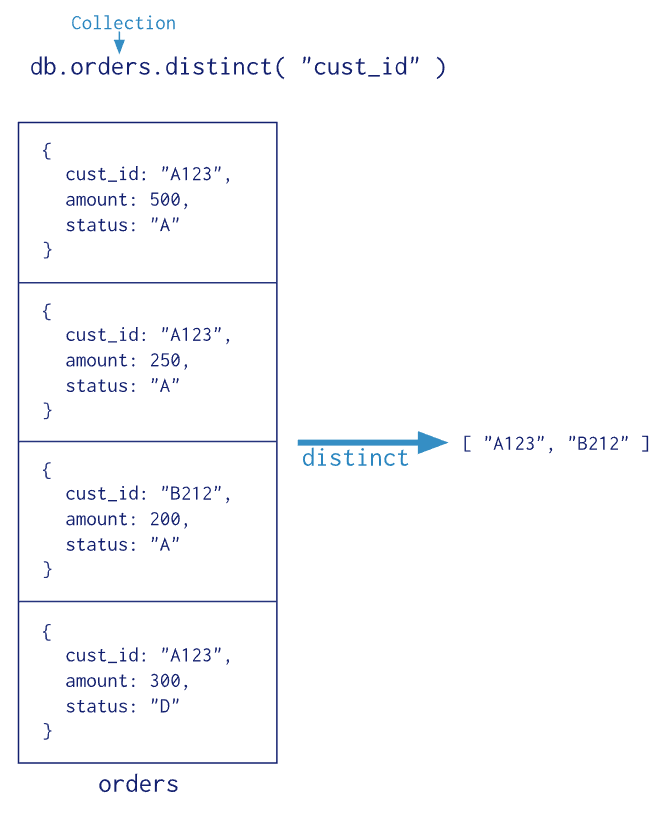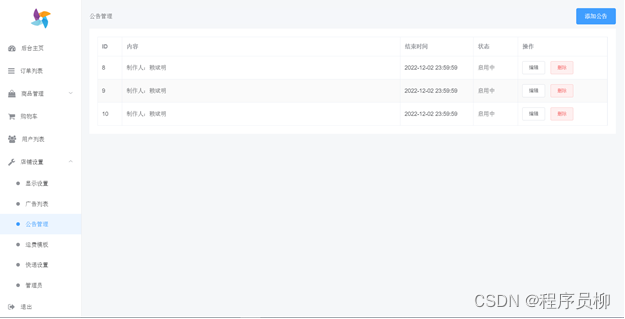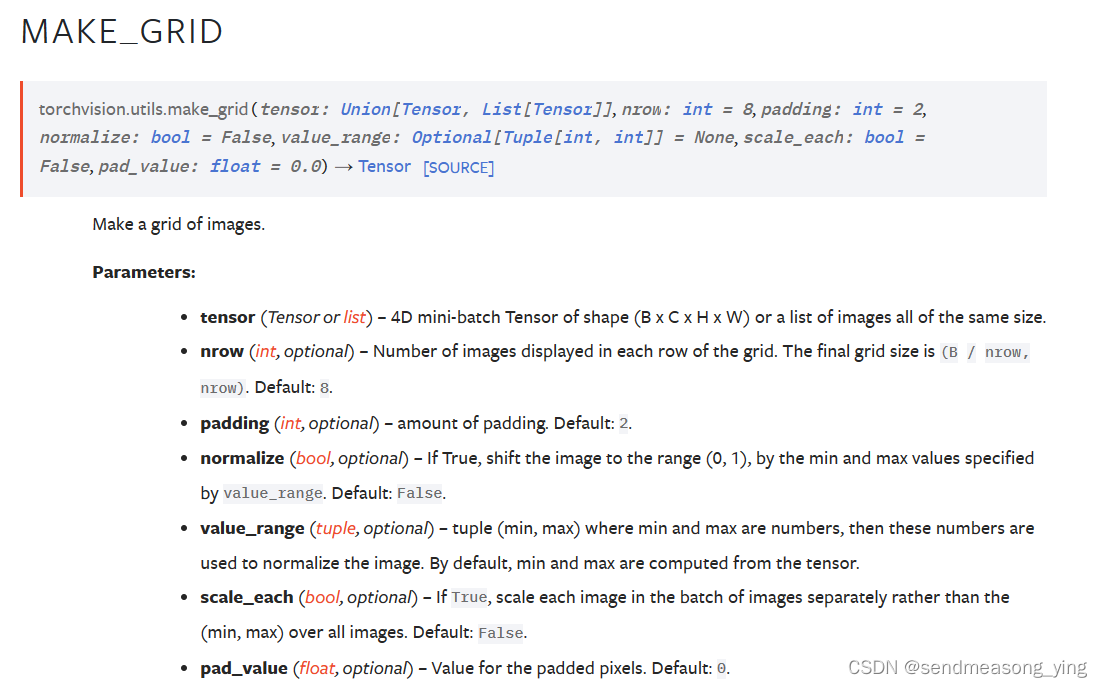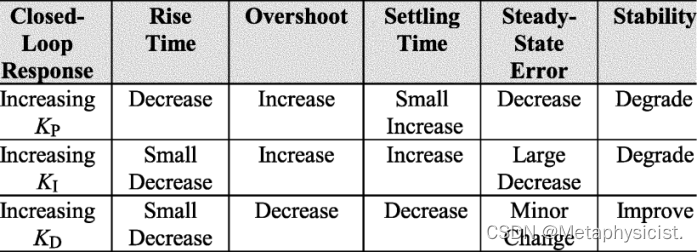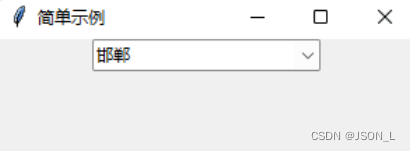一.词云的介绍
自然语言处理中的词云技术是文本可视化的一种形式,用于展示文本数据中词语的频率分布。以下是词云在自然语言处理中的基本介绍和发展:
起源和发展: 词云的概念最初来源于信息可视化领域,用于将文本中的关键词以视觉方式呈现。在自然语言处理中,词云得到了广泛的应用,特别是在文本分析、舆情分析、关键词提取等任务中。
工作原理: 词云生成的基本原理是通过文本中每个词的频率来确定词语的大小,频率高的词显示更大,频率低的词显示更小。一般来说,生成词云的过程包括文本的分词、词频统计和可视化展示。
文本清洗和预处理: 为了生成有意义的词云,需要对文本进行清洗和预处理。这包括去除停用词、标点符号,进行分词等。清洁的文本有助于更准确地反映文本的主题和关键词。
技术工具: Python中的WordCloud库是一个常用的工具,用于生成词云。此外,其他数据可视化库如Matplotlib、Seaborn等也可以与词云生成库结合使用。
应用领域: 词云技术在自然语言处理中广泛应用于文本可视化、舆情分析、主题分析、关键词提取等任务。它为用户提供了直观、易懂的方式来了解文本数据的重要特征。
发展趋势: 随着自然语言处理和数据可视化技术的不断发展,词云技术也在不断演进。近年来,一些先进的可视化方法和工具被引入,使得生成更具交互性和信息密度的词云成为可能。
总体而言,词云作为一种简单而直观的文本可视化工具,对于初步了解文本数据的关键信息非常有用。然而,在更复杂的文本分析任务中,更先进的自然语言处理技术和可视化方法可能被采用。
二.基本步骤
词云是一种可视化技术,常用于展示文本数据中词语的频率分布。在自然语言处理中,词云生成可以通过以下步骤完成:
1.1 文本数据处理: 首先,需要准备文本数据。这可以是一段文章、评论、新闻等文本内容。确保文本数据已经被清理、分词,并去除了停用词(常见但无实际意义的词语)。
1.2 词频统计: 对处理后的文本进行词频统计,计算每个词语在文本中的出现频率。这可以通过简单的计数或使用专业的自然语言处理库进行。
1.3 生成词云图: 使用词云生成工具或库,将词频统计结果转换为可视化的词云图。常用的工具包括Python中的WordCloud库。
1.4 调整参数: 根据需求,可以调整词云生成的参数,例如字体、颜色、形状等。这有助于生成更具吸引力和表现力的词云图。
1.5 可视化展示: 将生成的词云图进行可视化展示。这可以通过将词云嵌入到网页、报告中,或直接显示在应用程序中。
三.案例分析
相关数据集如下链接
https://download.csdn.net/download/qq_37977007/88767801
# 1.导入模块包
import jieba
from wordcloud import WordCloud
import matplotlib.pyplot as plt
import numpy as np
from PIL import Image
# 2.创建停用词的列表
stopwords = [line.strip() for line in open('english_stopwords.txt', 'r', encoding='utf-8').readlines()]
# 3.对句子进行分词
def seg_sentence(sentence):
words_sentence = jieba.cut(sentence.strip())
outstr = ''
for word_sentence in words_sentence:
if word_sentence not in stopwords:
if word_sentence != '\t':
outstr = outstr + word_sentence
outstr = outstr + " "
return outstr
if __name__ == "__main__":
# 4.读取文本,对文本的句子进行分词
inputs = open('wordcloud.txt', 'r', encoding='utf8')
outputs = open('output.txt', 'w')
for line in inputs:
line_Seg = seg_sentence(line)
outputs.write(line_Seg)
outputs.close()
inputs.close()
# 5.调用词云库构建词云,保存结果
wordcloud = open('output.txt', 'r')
mytext = wordcloud.read()
wordcloud = WordCloud(width=2000,height=2000,max_words=20,min_word_length=4, background_color="white").generate(mytext)
plt.imshow(wordcloud)
plt.show()
plt.savefig('result.png')
plt.axis('off')
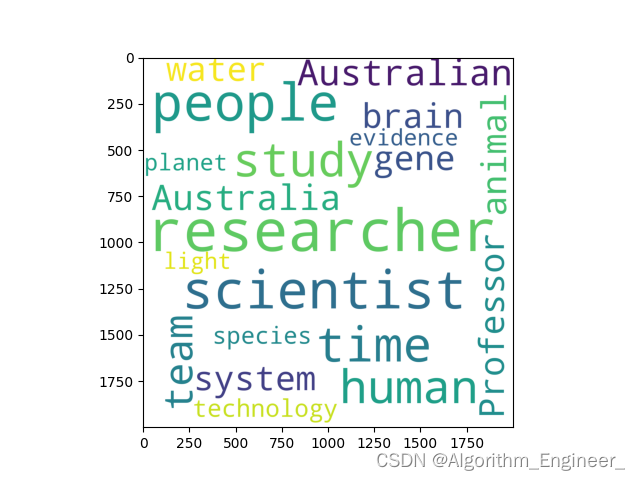
四.词云中的参数介绍
在生成词云时,通常可以设置一些参数来调整词云的外观和生成方式。以下是一些常见的词云参数及其介绍:
width和height:
介绍: 指定词云图的宽度和高度。
示例: WordCloud(width=800, height=400)
background_color:
介绍: 指定词云的背景颜色。
示例: WordCloud(background_color="white")
max_words:
介绍: 指定词云中显示的最大单词数量。
示例: WordCloud(max_words=100)
collocations:
介绍: 控制是否考虑词汇搭配(collocations),即词语之间的共现关系。
示例: WordCloud(collocations=False)
stopwords:
介绍: 指定停用词列表,这些词将被排除在词云之外。
示例: WordCloud(stopwords={"the", "and", "is"})
font_path:
介绍: 指定用于词云的字体文件路径。
示例: WordCloud(font_path="path/to/font.ttf")
max_font_size:
介绍: 控制词云中最大字体的大小。
示例: WordCloud(max_font_size=50)
min_font_size:
介绍: 控制词云中最小字体的大小。
示例: WordCloud(min_font_size=10)
random_state:
介绍: 用于控制词云生成的随机性,设置相同的值可以得到相同的输出。
示例: WordCloud(random_state=42)
mask:
介绍: 指定用作词云形状的蒙版图像,词云将在该形状内生成。
示例: WordCloud(mask=mask_image)
这只是一些常见的参数,具体使用时可以根据需要调整。不同的词云生成库可能有不同的参数设置,具体参考相应库的文档。
五.词云相关的官方代码如下
# coding=utf-8
# Author: Andreas Christian Mueller <t3kcit@gmail.com>
#
# (c) 2012
# Modified by: Paul Nechifor <paul@nechifor.net>
#
# License: MIT
from __future__ import division
import warnings
from random import Random
import io
import os
import re
import base64
import sys
import colorsys
import matplotlib
import numpy as np
from operator import itemgetter
from xml.sax import saxutils
from PIL import Image
from PIL import ImageColor
from PIL import ImageDraw
from PIL import ImageFilter
from PIL import ImageFont
from .query_integral_image import query_integral_image
from .tokenization import unigrams_and_bigrams, process_tokens
FILE = os.path.dirname(__file__)
FONT_PATH = os.environ.get('FONT_PATH', os.path.join(FILE, 'DroidSansMono.ttf'))
STOPWORDS = set(map(str.strip, open(os.path.join(FILE, 'stopwords')).readlines()))
class IntegralOccupancyMap(object):
def __init__(self, height, width, mask):
self.height = height
self.width = width
if mask is not None:
# the order of the cumsum's is important for speed ?!
self.integral = np.cumsum(np.cumsum(255 * mask, axis=1),
axis=0).astype(np.uint32)
else:
self.integral = np.zeros((height, width), dtype=np.uint32)
def sample_position(self, size_x, size_y, random_state):
return query_integral_image(self.integral, size_x, size_y,
random_state)
def update(self, img_array, pos_x, pos_y):
partial_integral = np.cumsum(np.cumsum(img_array[pos_x:, pos_y:],
axis=1), axis=0)
# paste recomputed part into old image
# if x or y is zero it is a bit annoying
if pos_x > 0:
if pos_y > 0:
partial_integral += (self.integral[pos_x - 1, pos_y:]
- self.integral[pos_x - 1, pos_y - 1])
else:
partial_integral += self.integral[pos_x - 1, pos_y:]
if pos_y > 0:
partial_integral += self.integral[pos_x:, pos_y - 1][:, np.newaxis]
self.integral[pos_x:, pos_y:] = partial_integral
def random_color_func(word=None, font_size=None, position=None,
orientation=None, font_path=None, random_state=None):
"""Random hue color generation.
Default coloring method. This just picks a random hue with value 80% and
lumination 50%.
Parameters
----------
word, font_size, position, orientation : ignored.
random_state : random.Random object or None, (default=None)
If a random object is given, this is used for generating random
numbers.
"""
if random_state is None:
random_state = Random()
return "hsl(%d, 80%%, 50%%)" % random_state.randint(0, 255)
class colormap_color_func(object):
"""Color func created from matplotlib colormap.
Parameters
----------
colormap : string or matplotlib colormap
Colormap to sample from
Example
-------
>>> WordCloud(color_func=colormap_color_func("magma"))
"""
def __init__(self, colormap):
import matplotlib.pyplot as plt
self.colormap = plt.cm.get_cmap(colormap)
def __call__(self, word, font_size, position, orientation,
random_state=None, **kwargs):
if random_state is None:
random_state = Random()
r, g, b, _ = np.maximum(0, 255 * np.array(self.colormap(
random_state.uniform(0, 1))))
return "rgb({:.0f}, {:.0f}, {:.0f})".format(r, g, b)
def get_single_color_func(color):
"""Create a color function which returns a single hue and saturation with.
different values (HSV). Accepted values are color strings as usable by
PIL/Pillow.
>>> color_func1 = get_single_color_func('deepskyblue')
>>> color_func2 = get_single_color_func('#00b4d2')
"""
old_r, old_g, old_b = ImageColor.getrgb(color)
rgb_max = 255.
h, s, v = colorsys.rgb_to_hsv(old_r / rgb_max, old_g / rgb_max,
old_b / rgb_max)
def single_color_func(word=None, font_size=None, position=None,
orientation=None, font_path=None, random_state=None):
"""Random color generation.
Additional coloring method. It picks a random value with hue and
saturation based on the color given to the generating function.
Parameters
----------
word, font_size, position, orientation : ignored.
random_state : random.Random object or None, (default=None)
If a random object is given, this is used for generating random
numbers.
"""
if random_state is None:
random_state = Random()
r, g, b = colorsys.hsv_to_rgb(h, s, random_state.uniform(0.2, 1))
return 'rgb({:.0f}, {:.0f}, {:.0f})'.format(r * rgb_max, g * rgb_max,
b * rgb_max)
return single_color_func
class WordCloud(object):
r"""Word cloud object for generating and drawing.
Parameters
----------
font_path : string
Font path to the font that will be used (OTF or TTF).
Defaults to DroidSansMono path on a Linux machine. If you are on
another OS or don't have this font, you need to adjust this path.
width : int (default=400)
Width of the canvas.
height : int (default=200)
Height of the canvas.
prefer_horizontal : float (default=0.90)
The ratio of times to try horizontal fitting as opposed to vertical.
If prefer_horizontal < 1, the algorithm will try rotating the word
if it doesn't fit. (There is currently no built-in way to get only
vertical words.)
mask : nd-array or None (default=None)
If not None, gives a binary mask on where to draw words. If mask is not
None, width and height will be ignored and the shape of mask will be
used instead. All white (#FF or #FFFFFF) entries will be considerd
"masked out" while other entries will be free to draw on. [This
changed in the most recent version!]
contour_width: float (default=0)
If mask is not None and contour_width > 0, draw the mask contour.
contour_color: color value (default="black")
Mask contour color.
scale : float (default=1)
Scaling between computation and drawing. For large word-cloud images,
using scale instead of larger canvas size is significantly faster, but
might lead to a coarser fit for the words.
min_font_size : int (default=4)
Smallest font size to use. Will stop when there is no more room in this
size.
font_step : int (default=1)
Step size for the font. font_step > 1 might speed up computation but
give a worse fit.
max_words : number (default=200)
The maximum number of words.
stopwords : set of strings or None
The words that will be eliminated. If None, the build-in STOPWORDS
list will be used. Ignored if using generate_from_frequencies.
background_color : color value (default="black")
Background color for the word cloud image.
max_font_size : int or None (default=None)
Maximum font size for the largest word. If None, height of the image is
used.
mode : string (default="RGB")
Transparent background will be generated when mode is "RGBA" and
background_color is None.
relative_scaling : float (default='auto')
Importance of relative word frequencies for font-size. With
relative_scaling=0, only word-ranks are considered. With
relative_scaling=1, a word that is twice as frequent will have twice
the size. If you want to consider the word frequencies and not only
their rank, relative_scaling around .5 often looks good.
If 'auto' it will be set to 0.5 unless repeat is true, in which
case it will be set to 0.
.. versionchanged: 2.0
Default is now 'auto'.
color_func : callable, default=None
Callable with parameters word, font_size, position, orientation,
font_path, random_state that returns a PIL color for each word.
Overwrites "colormap".
See colormap for specifying a matplotlib colormap instead.
To create a word cloud with a single color, use
``color_func=lambda *args, **kwargs: "white"``.
The single color can also be specified using RGB code. For example
``color_func=lambda *args, **kwargs: (255,0,0)`` sets color to red.
regexp : string or None (optional)
Regular expression to split the input text into tokens in process_text.
If None is specified, ``r"\w[\w']+"`` is used. Ignored if using
generate_from_frequencies.
collocations : bool, default=True
Whether to include collocations (bigrams) of two words. Ignored if using
generate_from_frequencies.
.. versionadded: 2.0
colormap : string or matplotlib colormap, default="viridis"
Matplotlib colormap to randomly draw colors from for each word.
Ignored if "color_func" is specified.
.. versionadded: 2.0
normalize_plurals : bool, default=True
Whether to remove trailing 's' from words. If True and a word
appears with and without a trailing 's', the one with trailing 's'
is removed and its counts are added to the version without
trailing 's' -- unless the word ends with 'ss'. Ignored if using
generate_from_frequencies.
repeat : bool, default=False
Whether to repeat words and phrases until max_words or min_font_size
is reached.
include_numbers : bool, default=False
Whether to include numbers as phrases or not.
min_word_length : int, default=0
Minimum number of letters a word must have to be included.
collocation_threshold: int, default=30
Bigrams must have a Dunning likelihood collocation score greater than this
parameter to be counted as bigrams. Default of 30 is arbitrary.
See Manning, C.D., Manning, C.D. and Schütze, H., 1999. Foundations of
Statistical Natural Language Processing. MIT press, p. 162
https://nlp.stanford.edu/fsnlp/promo/colloc.pdf#page=22
Attributes
----------
``words_`` : dict of string to float
Word tokens with associated frequency.
.. versionchanged: 2.0
``words_`` is now a dictionary
``layout_`` : list of tuples ((string, float), int, (int, int), int, color))
Encodes the fitted word cloud. For each word, it encodes the string,
normalized frequency, font size, position, orientation, and color.
The frequencies are normalized by the most commonly occurring word.
The color is in the format of 'rgb(R, G, B).'
Notes
-----
Larger canvases make the code significantly slower. If you need a
large word cloud, try a lower canvas size, and set the scale parameter.
The algorithm might give more weight to the ranking of the words
than their actual frequencies, depending on the ``max_font_size`` and the
scaling heuristic.
"""
def __init__(self, font_path=None, width=400, height=200, margin=2,
ranks_only=None, prefer_horizontal=.9, mask=None, scale=1,
color_func=None, max_words=200, min_font_size=4,
stopwords=None, random_state=None, background_color='black',
max_font_size=None, font_step=1, mode="RGB",
relative_scaling='auto', regexp=None, collocations=True,
colormap=None, normalize_plurals=True, contour_width=0,
contour_color='black', repeat=False,
include_numbers=False, min_word_length=0, collocation_threshold=30):
if font_path is None:
font_path = FONT_PATH
if color_func is None and colormap is None:
version = matplotlib.__version__
if version[0] < "2" and version[2] < "5":
colormap = "hsv"
else:
colormap = "viridis"
self.colormap = colormap
self.collocations = collocations
self.font_path = font_path
self.width = width
self.height = height
self.margin = margin
self.prefer_horizontal = prefer_horizontal
self.mask = mask
self.contour_color = contour_color
self.contour_width = contour_width
self.scale = scale
self.color_func = color_func or colormap_color_func(colormap)
self.max_words = max_words
self.stopwords = stopwords if stopwords is not None else STOPWORDS
self.min_font_size = min_font_size
self.font_step = font_step
self.regexp = regexp
if isinstance(random_state, int):
random_state = Random(random_state)
self.random_state = random_state
self.background_color = background_color
self.max_font_size = max_font_size
self.mode = mode
if relative_scaling == "auto":
if repeat:
relative_scaling = 0
else:
relative_scaling = .5
if relative_scaling < 0 or relative_scaling > 1:
raise ValueError("relative_scaling needs to be "
"between 0 and 1, got %f." % relative_scaling)
self.relative_scaling = relative_scaling
if ranks_only is not None:
warnings.warn("ranks_only is deprecated and will be removed as"
" it had no effect. Look into relative_scaling.",
DeprecationWarning)
self.normalize_plurals = normalize_plurals
self.repeat = repeat
self.include_numbers = include_numbers
self.min_word_length = min_word_length
self.collocation_threshold = collocation_threshold
# Override the width and height if there is a mask
if mask is not None:
self.width = mask.shape[1]
self.height = mask.shape[0]
def fit_words(self, frequencies):
"""Create a word_cloud from words and frequencies.
Alias to generate_from_frequencies.
Parameters
----------
frequencies : dict from string to float
A contains words and associated frequency.
Returns
-------
self
"""
return self.generate_from_frequencies(frequencies)
def generate_from_frequencies(self, frequencies, max_font_size=None): # noqa: C901
"""Create a word_cloud from words and frequencies.
Parameters
----------
frequencies : dict from string to float
A contains words and associated frequency.
max_font_size : int
Use this font-size instead of self.max_font_size
Returns
-------
self
"""
# make sure frequencies are sorted and normalized
frequencies = sorted(frequencies.items(), key=itemgetter(1), reverse=True)
if len(frequencies) <= 0:
raise ValueError("We need at least 1 word to plot a word cloud, "
"got %d." % len(frequencies))
frequencies = frequencies[:self.max_words]
# largest entry will be 1
max_frequency = float(frequencies[0][1])
frequencies = [(word, freq / max_frequency)
for word, freq in frequencies]
if self.random_state is not None:
random_state = self.random_state
else:
random_state = Random()
if self.mask is not None:
boolean_mask = self._get_bolean_mask(self.mask)
width = self.mask.shape[1]
height = self.mask.shape[0]
else:
boolean_mask = None
height, width = self.height, self.width
occupancy = IntegralOccupancyMap(height, width, boolean_mask)
# create image
img_grey = Image.new("L", (width, height))
draw = ImageDraw.Draw(img_grey)
img_array = np.asarray(img_grey)
font_sizes, positions, orientations, colors = [], [], [], []
last_freq = 1.
if max_font_size is None:
# if not provided use default font_size
max_font_size = self.max_font_size
if max_font_size is None:
# figure out a good font size by trying to draw with
# just the first two words
if len(frequencies) == 1:
# we only have one word. We make it big!
font_size = self.height
else:
self.generate_from_frequencies(dict(frequencies[:2]),
max_font_size=self.height)
# find font sizes
sizes = [x[1] for x in self.layout_]
try:
font_size = int(2 * sizes[0] * sizes[1]
/ (sizes[0] + sizes[1]))
# quick fix for if self.layout_ contains less than 2 values
# on very small images it can be empty
except IndexError:
try:
font_size = sizes[0]
except IndexError:
raise ValueError(
"Couldn't find space to draw. Either the Canvas size"
" is too small or too much of the image is masked "
"out.")
else:
font_size = max_font_size
# we set self.words_ here because we called generate_from_frequencies
# above... hurray for good design?
self.words_ = dict(frequencies)
if self.repeat and len(frequencies) < self.max_words:
# pad frequencies with repeating words.
times_extend = int(np.ceil(self.max_words / len(frequencies))) - 1
# get smallest frequency
frequencies_org = list(frequencies)
downweight = frequencies[-1][1]
for i in range(times_extend):
frequencies.extend([(word, freq * downweight ** (i + 1))
for word, freq in frequencies_org])
# start drawing grey image
for word, freq in frequencies:
if freq == 0:
continue
# select the font size
rs = self.relative_scaling
if rs != 0:
font_size = int(round((rs * (freq / float(last_freq))
+ (1 - rs)) * font_size))
if random_state.random() < self.prefer_horizontal:
orientation = None
else:
orientation = Image.ROTATE_90
tried_other_orientation = False
while True:
# try to find a position
font = ImageFont.truetype(self.font_path, font_size)
# transpose font optionally
transposed_font = ImageFont.TransposedFont(
font, orientation=orientation)
# get size of resulting text
box_size = draw.textsize(word, font=transposed_font)
# find possible places using integral image:
result = occupancy.sample_position(box_size[1] + self.margin,
box_size[0] + self.margin,
random_state)
if result is not None or font_size < self.min_font_size:
# either we found a place or font-size went too small
break
# if we didn't find a place, make font smaller
# but first try to rotate!
if not tried_other_orientation and self.prefer_horizontal < 1:
orientation = (Image.ROTATE_90 if orientation is None else
Image.ROTATE_90)
tried_other_orientation = True
else:
font_size -= self.font_step
orientation = None
if font_size < self.min_font_size:
# we were unable to draw any more
break
x, y = np.array(result) + self.margin // 2
# actually draw the text
draw.text((y, x), word, fill="white", font=transposed_font)
positions.append((x, y))
orientations.append(orientation)
font_sizes.append(font_size)
colors.append(self.color_func(word, font_size=font_size,
position=(x, y),
orientation=orientation,
random_state=random_state,
font_path=self.font_path))
# recompute integral image
if self.mask is None:
img_array = np.asarray(img_grey)
else:
img_array = np.asarray(img_grey) + boolean_mask
# recompute bottom right
# the order of the cumsum's is important for speed ?!
occupancy.update(img_array, x, y)
last_freq = freq
self.layout_ = list(zip(frequencies, font_sizes, positions,
orientations, colors))
return self
def process_text(self, text):
"""Splits a long text into words, eliminates the stopwords.
Parameters
----------
text : string
The text to be processed.
Returns
-------
words : dict (string, int)
Word tokens with associated frequency.
..versionchanged:: 1.2.2
Changed return type from list of tuples to dict.
Notes
-----
There are better ways to do word tokenization, but I don't want to
include all those things.
"""
flags = (re.UNICODE if sys.version < '3' and type(text) is unicode # noqa: F821
else 0)
pattern = r"\w[\w']*" if self.min_word_length <= 1 else r"\w[\w']+"
regexp = self.regexp if self.regexp is not None else pattern
words = re.findall(regexp, text, flags)
# remove 's
words = [word[:-2] if word.lower().endswith("'s") else word
for word in words]
# remove numbers
if not self.include_numbers:
words = [word for word in words if not word.isdigit()]
# remove short words
if self.min_word_length:
words = [word for word in words if len(word) >= self.min_word_length]
stopwords = set([i.lower() for i in self.stopwords])
if self.collocations:
word_counts = unigrams_and_bigrams(words, stopwords, self.normalize_plurals, self.collocation_threshold)
else:
# remove stopwords
words = [word for word in words if word.lower() not in stopwords]
word_counts, _ = process_tokens(words, self.normalize_plurals)
return word_counts
def generate_from_text(self, text):
"""Generate wordcloud from text.
The input "text" is expected to be a natural text. If you pass a sorted
list of words, words will appear in your output twice. To remove this
duplication, set ``collocations=False``.
Calls process_text and generate_from_frequencies.
..versionchanged:: 1.2.2
Argument of generate_from_frequencies() is not return of
process_text() any more.
Returns
-------
self
"""
words = self.process_text(text)
self.generate_from_frequencies(words)
return self
def generate(self, text):
"""Generate wordcloud from text.
The input "text" is expected to be a natural text. If you pass a sorted
list of words, words will appear in your output twice. To remove this
duplication, set ``collocations=False``.
Alias to generate_from_text.
Calls process_text and generate_from_frequencies.
Returns
-------
self
"""
return self.generate_from_text(text)
def _check_generated(self):
"""Check if ``layout_`` was computed, otherwise raise error."""
if not hasattr(self, "layout_"):
raise ValueError("WordCloud has not been calculated, call generate"
" first.")
def to_image(self):
self._check_generated()
if self.mask is not None:
width = self.mask.shape[1]
height = self.mask.shape[0]
else:
height, width = self.height, self.width
img = Image.new(self.mode, (int(width * self.scale),
int(height * self.scale)),
self.background_color)
draw = ImageDraw.Draw(img)
for (word, count), font_size, position, orientation, color in self.layout_:
font = ImageFont.truetype(self.font_path,
int(font_size * self.scale))
transposed_font = ImageFont.TransposedFont(
font, orientation=orientation)
pos = (int(position[1] * self.scale),
int(position[0] * self.scale))
draw.text(pos, word, fill=color, font=transposed_font)
return self._draw_contour(img=img)
def recolor(self, random_state=None, color_func=None, colormap=None):
"""Recolor existing layout.
Applying a new coloring is much faster than generating the whole
wordcloud.
Parameters
----------
random_state : RandomState, int, or None, default=None
If not None, a fixed random state is used. If an int is given, this
is used as seed for a random.Random state.
color_func : function or None, default=None
Function to generate new color from word count, font size, position
and orientation. If None, self.color_func is used.
colormap : string or matplotlib colormap, default=None
Use this colormap to generate new colors. Ignored if color_func
is specified. If None, self.color_func (or self.color_map) is used.
Returns
-------
self
"""
if isinstance(random_state, int):
random_state = Random(random_state)
self._check_generated()
if color_func is None:
if colormap is None:
color_func = self.color_func
else:
color_func = colormap_color_func(colormap)
self.layout_ = [(word_freq, font_size, position, orientation,
color_func(word=word_freq[0], font_size=font_size,
position=position, orientation=orientation,
random_state=random_state,
font_path=self.font_path))
for word_freq, font_size, position, orientation, _
in self.layout_]
return self
def to_file(self, filename):
"""Export to image file.
Parameters
----------
filename : string
Location to write to.
Returns
-------
self
"""
img = self.to_image()
img.save(filename, optimize=True)
return self
def to_array(self):
"""Convert to numpy array.
Returns
-------
image : nd-array size (width, height, 3)
Word cloud image as numpy matrix.
"""
return np.array(self.to_image())
def __array__(self):
"""Convert to numpy array.
Returns
-------
image : nd-array size (width, height, 3)
Word cloud image as numpy matrix.
"""
return self.to_array()
def to_svg(self, embed_font=False, optimize_embedded_font=True, embed_image=False):
"""Export to SVG.
Font is assumed to be available to the SVG reader. Otherwise, text
coordinates may produce artifacts when rendered with replacement font.
It is also possible to include a subset of the original font in WOFF
format using ``embed_font`` (requires `fontTools`).
Note that some renderers do not handle glyphs the same way, and may
differ from ``to_image`` result. In particular, Complex Text Layout may
not be supported. In this typesetting, the shape or positioning of a
grapheme depends on its relation to other graphemes.
Pillow, since version 4.2.0, supports CTL using ``libraqm``. However,
due to dependencies, this feature is not always enabled. Hence, the
same rendering differences may appear in ``to_image``. As this
rasterized output is used to compute the layout, this also affects the
layout generation. Use ``PIL.features.check`` to test availability of
``raqm``.
Consistant rendering is therefore expected if both Pillow and the SVG
renderer have the same support of CTL.
Contour drawing is not supported.
Parameters
----------
embed_font : bool, default=False
Whether to include font inside resulting SVG file.
optimize_embedded_font : bool, default=True
Whether to be aggressive when embedding a font, to reduce size. In
particular, hinting tables are dropped, which may introduce slight
changes to character shapes (w.r.t. `to_image` baseline).
embed_image : bool, default=False
Whether to include rasterized image inside resulting SVG file.
Useful for debugging.
Returns
-------
content : string
Word cloud image as SVG string
"""
# TODO should add option to specify URL for font (i.e. WOFF file)
# Make sure layout is generated
self._check_generated()
# Get output size, in pixels
if self.mask is not None:
width = self.mask.shape[1]
height = self.mask.shape[0]
else:
height, width = self.height, self.width
# Get max font size
if self.max_font_size is None:
max_font_size = max(w[1] for w in self.layout_)
else:
max_font_size = self.max_font_size
# Text buffer
result = []
# Get font information
font = ImageFont.truetype(self.font_path, int(max_font_size * self.scale))
raw_font_family, raw_font_style = font.getname()
# TODO properly escape/quote this name?
font_family = repr(raw_font_family)
# TODO better support for uncommon font styles/weights?
raw_font_style = raw_font_style.lower()
if 'bold' in raw_font_style:
font_weight = 'bold'
else:
font_weight = 'normal'
if 'italic' in raw_font_style:
font_style = 'italic'
elif 'oblique' in raw_font_style:
font_style = 'oblique'
else:
font_style = 'normal'
# Add header
result.append(
'<svg'
' xmlns="http://www.w3.org/2000/svg"'
' width="{}"'
' height="{}"'
'>'
.format(
width * self.scale,
height * self.scale
)
)
# Embed font, if requested
if embed_font:
# Import here, to avoid hard dependency on fonttools
import fontTools
import fontTools.subset
# Subset options
options = fontTools.subset.Options(
# Small impact on character shapes, but reduce size a lot
hinting=not optimize_embedded_font,
# On small subsets, can improve size
desubroutinize=optimize_embedded_font,
# Try to be lenient
ignore_missing_glyphs=True,
)
# Load and subset font
ttf = fontTools.subset.load_font(self.font_path, options)
subsetter = fontTools.subset.Subsetter(options)
characters = {c for item in self.layout_ for c in item[0][0]}
text = ''.join(characters)
subsetter.populate(text=text)
subsetter.subset(ttf)
# Export as WOFF
# TODO is there a better method, i.e. directly export to WOFF?
buffer = io.BytesIO()
ttf.saveXML(buffer)
buffer.seek(0)
woff = fontTools.ttLib.TTFont(flavor='woff')
woff.importXML(buffer)
# Create stylesheet with embedded font face
buffer = io.BytesIO()
woff.save(buffer)
data = base64.b64encode(buffer.getbuffer()).decode('ascii')
url = 'data:application/font-woff;charset=utf-8;base64,' + data
result.append(
'<style>'
'@font-face{{'
'font-family:{};'
'font-weight:{};'
'font-style:{};'
'src:url("{}")format("woff");'
'}}'
'</style>'
.format(
font_family,
font_weight,
font_style,
url
)
)
# Select global style
result.append(
'<style>'
'text{{'
'font-family:{};'
'font-weight:{};'
'font-style:{};'
'}}'
'</style>'
.format(
font_family,
font_weight,
font_style
)
)
# Add background
if self.background_color is not None:
result.append(
'<rect'
' width="100%"'
' height="100%"'
' style="fill:{}"'
'>'
'</rect>'
.format(self.background_color)
)
# Embed image, useful for debug purpose
if embed_image:
image = self.to_image()
data = io.BytesIO()
image.save(data, format='JPEG')
data = base64.b64encode(data.getbuffer()).decode('ascii')
result.append(
'<image'
' width="100%"'
' height="100%"'
' href="data:image/jpg;base64,{}"'
'/>'
.format(data)
)
# For each word in layout
for (word, count), font_size, (y, x), orientation, color in self.layout_:
x *= self.scale
y *= self.scale
# Get text metrics
font = ImageFont.truetype(self.font_path, int(font_size * self.scale))
(size_x, size_y), (offset_x, offset_y) = font.font.getsize(word)
ascent, descent = font.getmetrics()
# Compute text bounding box
min_x = -offset_x
max_x = size_x - offset_x
max_y = ascent - offset_y
# Compute text attributes
attributes = {}
if orientation == Image.ROTATE_90:
x += max_y
y += max_x - min_x
transform = 'translate({},{}) rotate(-90)'.format(x, y)
else:
x += min_x
y += max_y
transform = 'translate({},{})'.format(x, y)
# Create node
attributes = ' '.join('{}="{}"'.format(k, v) for k, v in attributes.items())
result.append(
'<text'
' transform="{}"'
' font-size="{}"'
' style="fill:{}"'
'>'
'{}'
'</text>'
.format(
transform,
font_size * self.scale,
color,
saxutils.escape(word)
)
)
# TODO draw contour
# Complete SVG file
result.append('</svg>')
return '\n'.join(result)
def _get_bolean_mask(self, mask):
"""Cast to two dimensional boolean mask."""
if mask.dtype.kind == 'f':
warnings.warn("mask image should be unsigned byte between 0"
" and 255. Got a float array")
if mask.ndim == 2:
boolean_mask = mask == 255
elif mask.ndim == 3:
# if all channels are white, mask out
boolean_mask = np.all(mask[:, :, :3] == 255, axis=-1)
else:
raise ValueError("Got mask of invalid shape: %s" % str(mask.shape))
return boolean_mask
def _draw_contour(self, img):
"""Draw mask contour on a pillow image."""
if self.mask is None or self.contour_width == 0:
return img
mask = self._get_bolean_mask(self.mask) * 255
contour = Image.fromarray(mask.astype(np.uint8))
contour = contour.resize(img.size)
contour = contour.filter(ImageFilter.FIND_EDGES)
contour = np.array(contour)
# make sure borders are not drawn before changing width
contour[[0, -1], :] = 0
contour[:, [0, -1]] = 0
# use gaussian to change width, divide by 10 to give more resolution
radius = self.contour_width / 10
contour = Image.fromarray(contour)
contour = contour.filter(ImageFilter.GaussianBlur(radius=radius))
contour = np.array(contour) > 0
contour = np.dstack((contour, contour, contour))
# color the contour
ret = np.array(img) * np.invert(contour)
if self.contour_color != 'black':
color = Image.new(img.mode, img.size, self.contour_color)
ret += np.array(color) * contour
return Image.fromarray(ret)
